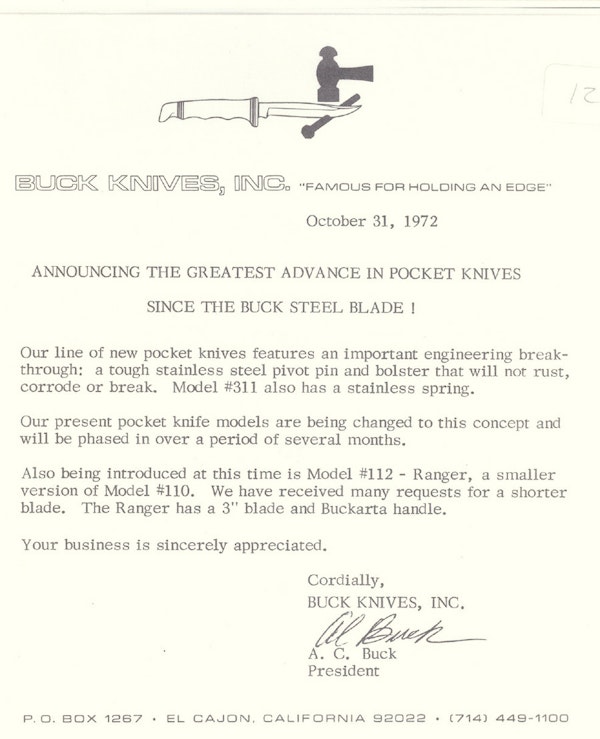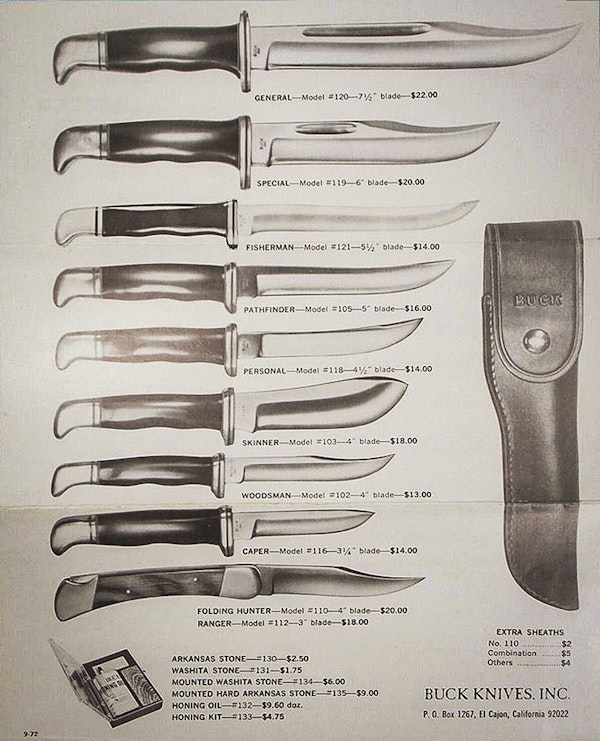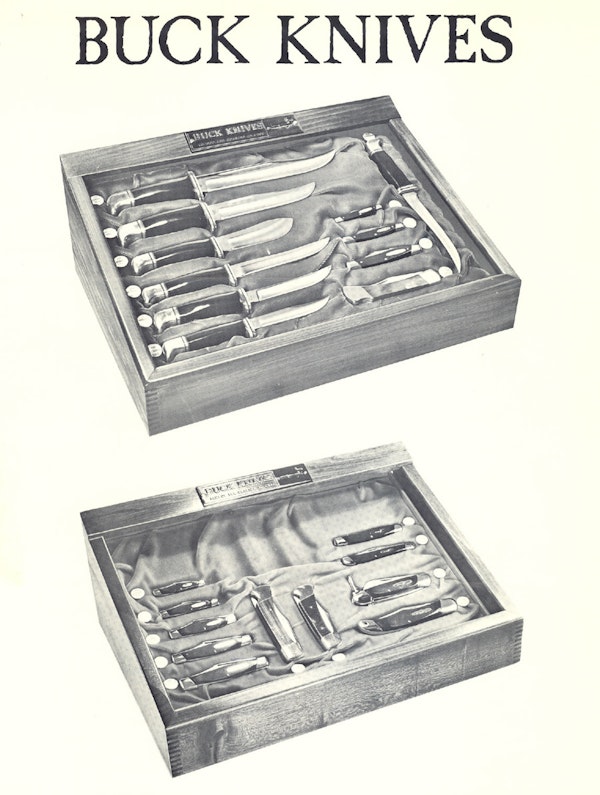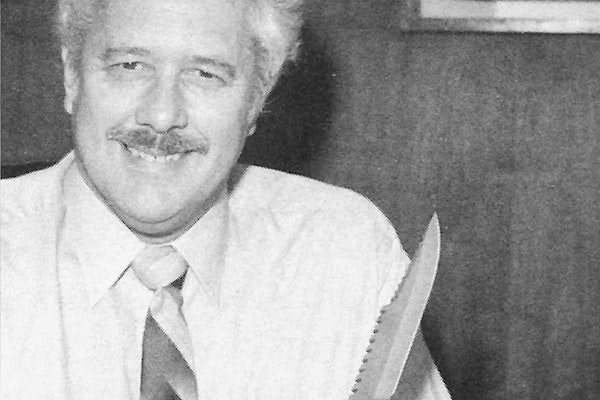Brass bolsters, deep clip point blade, wood handles…the unmistakable style so many generations have come to know and love in our 110 Folding Hunter and slightly smaller 112 Ranger. And to most, the 112 Ranger seems an obvious fit, a slightly smaller, more compact knife for those that felt the 110 Folding Hunter was just a bit too hefty.

But the story of 112 Ranger and its introduction into the Buck Knives stable was not a simple observation that customers may like a smaller 110. Instead it came about under necessity and as a response to unfortunate circumstances. Introduced in 1972, eight years after the 110 Folding Hunter had secured a permanent hold in the marketplace, the 112 was introduced and subsequently named after the USS aircraft carrier that would lead to its creation.

The story tells of an altercation between two sailors on the USS Ranger which became very serious. One of the sailors was inflicted with a deep stab wound, supposedly from a Buck 110. Due to the severity of the wound, the USS Ranger commander banned all knives with a blade exceeding 3” from use on the ship. This also disqualified the 110 from being sold in the ship’s store.

The story tells of an altercation between two sailors on the USS Ranger which became very serious. One of the sailors was inflicted with a deep stab wound, supposedly from a Buck 110. Due to the severity of the wound, the USS Ranger commander banned all knives with a blade exceeding 3” from use on the ship. This also disqualified the 110 from being sold in the ship’s store.
After news of these events found its way to Buck Knives, the management team was concerned this decree would become a rule across all Navy ships and naval base stores, which would put a significant dent in 110 sales at the time.

The Buck team got to work on a little brother to the 110, which we now know became the 112 Ranger, named after that ship that altered the course of Buck’s history. The first Ranger released featured a 3”, 440C blade, a black Micarta handle and the famous brass bolsters. It was in 1973 that Buck started using Macassar ebony handle inlays, then fast forward to 1992 when 420HC was utilized for the blades. This 420HC/Macassar version of the 112 held true until 2019 when Buck made the decision to use genuine Crelicam™ ebony handles sourced from Taylor Guitars.

The early Rangers, as with the 110, were not originally offered with a finger grooved models, but these grooves were being widely added in the aftermarket. Buck decided it would be best to give customers an option covered by their warranty and added the finger grooved models in 1982. Another historical tidbit – the original Ranger’s did not have the nail notch in the blade. The nail notch was added around 1980 when someone on the sales team was insistent this would help overall performance of the 112. True or not, the 112 holds a high positon in Buck’s product line, up there with the 110 and 119 Special as a customer favorite for nearly half a century.
Credits:
A special thanks to Larry Oden, author, collector and Buck expert historian for providing 112 Ranger historical info. 112 Photo – photo taken by Craig Heflebower, provided with permission




